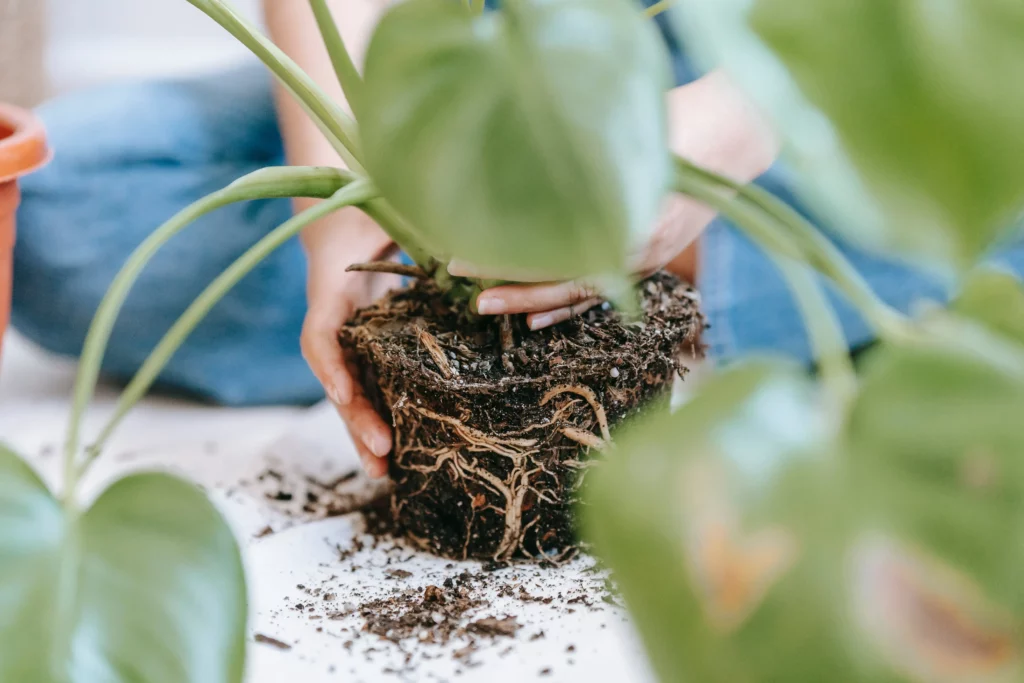The Philodendron white knight is a rare and sought-after houseplant from the Aroid family. It has striking white and green variegated leaves that can turn pink or red in bright light. This plant is a climber that can grow up to 6 feet tall with the help of a support. However, it is also a slow-growing plant that requires patience and proper care to thrive. This guide will cover everything you need to know about the philodendron white knight, including its origin and characteristics. Let’s get started!
Philodendron white knight origin
It was first introduced to the United States in 1948 by H. Lincoln Foster, an American plant explorer and collector. Philodendron white knight is part of the Araceae family and originates from South America, where it grows in warm and humid conditions. It is a rare and unique plant that has striking white and green variegated leaves that can turn pink or red in bright light. It is a climber that can grow up to 10 feet tall with the help of a support. It is a slow-growing plant that requires patience and proper care to thrive. Philodendron white knight is a beautiful and desirable houseplant that can add a touch of elegance and contrast to any indoor space.
White knight philodendron characteristics
Some characteristics of a white knight philodendron are:
- It is a tropical plant from the Araceae family and originates from South America.
- It has large, glossy, heart-shaped leaves with striking white and green variegations. The white patches can turn pink or red in bright light.
- It is a climbing or trailing vine that can grow up to 10 feet tall with the help of a support. It is a slow-growing plant that requires patience and proper care.
- It prefers bright indirect light, moderate to high humidity, and well-draining soil. It is sensitive to overwatering, cold temperatures, and pests.
- It is a rare and sought-after houseplant due to its ornamental appeal and relatively easy care. It can add a touch of elegance and contrast to any indoor space.
Philodendron white wizard vs white knight
Philodendron white wizard and white knight are two philodendrons varieties with white variegated leaves. They are both rare and beautiful plants that can add a touch of elegance to any indoor space. However, they are not the same and have some differences that can help you tell them apart. Here are some of the main differences between Philodendron white wizard and white knight:
- Stem color: The Philodendron white knight has deep red stems with white variegation, while the Philodendron white wizard has green stems with white variegation. The red color of the white knight stems resembles the philodendron pink princess, another popular variegated philodendron.
- Leaf shape: Philodendron white knight has smaller, oval-shaped leaves, while Philodendron white wizard has larger, round-shaped leaves. The white wizard leaves tend to get rounder as the plant matures.
- Leaf size: The Philodendron white knight has smaller leaves than the Philodendron white wizard. The white knight leaves can grow up to about 20 cm long, while the white wizard leaves can grow up to about 30 cm long.
- Variegation concentration: Philodendron white knight has more white variegation than Philodendron white wizard. The white knight leaves can have up to 50% or more white variegation. In comparison, the white wizard leaves usually have less than 50% white variegation. The white variegation can also turn pink or red in bright light, especially on the white knight leaves.
- Plant size: Philodendron white knight can grow taller and longer than Philodendron white wizard. The white knight can grow up to 10 feet tall with the help of support, while the white wizard can grow up to 6 feet tall.
- Growth style: Philodendron white knight is a climber that can grow vertically with the help of a support, while Philodendron white wizard is a creeper that can grow horizontally. The white wizard’s stems are not as thick or strong as the white knight’s stems, and the white wizard does not spread as fast as the white knight.
These are some of the main differences between a Philodendron white wizard and a white knight. They are both stunning plants that can brighten up any room with their white variegated foliage. However, they have different characteristics that make them unique and distinguishable.
White Knight Philodendron care
Taking care of a white knight philodendron is not very difficult. Still, it does require some attention and patience. This plant is a rare and beautiful variety of Philodendron that has white and green variegated leaves that can turn pink or red in bright light. It is a climber that can grow up to 10 feet tall with the help of a support. It is a slow-growing plant that needs proper light, water, soil, temperature, humidity, and fertilizer to thrive. Here are some tips on how to take care of a white knight philodendron:
Light:
This plant prefers bright indirect light, as direct sunlight can burn its delicate foliage, especially the white variegation. You can place it near a window that receives filtered sunlight or use a curtain or a blind to diffuse the harsh rays. You can also use artificial lights, such as grow lights, to supplement the natural light, but make sure to keep a safe distance of at least 60 cm between the plant and the light source.
Water:
This plant likes to be watered regularly, but not too much. You should water it only when the top two inches of the soil are dry to the touch. You can use your finger or a moisture meter to check the soil moisture. You should water the plant thoroughly until the water drains out of the drainage holes, and then discard the excess water. You should avoid overwatering or underwatering the plant, as both can cause problems, such as root rot, fungal diseases, leaf yellowing, or wilting.
Soil:
This plant needs well-draining soil that is rich in organic matter, such as peat moss and compost. You can use a potting mix designed for philodendrons or make your own by mixing potting soil, bark and perlite or vermiculite. You should repot the plant every two to three years or when it outgrows its current pot. You should choose a pot that is slightly larger than the previous one and has drainage holes at the bottom.
Temperature:
This plant likes warm temperatures, between 65 to 80°F (18 to 27°C). It does not tolerate cold or frost, so you should keep it away from drafts, windows, or air conditioners. If the temperature drops below 55°F (12°C), the plant may stop growing or suffer from cold damage. You should move the plant to a warmer spot in your home during the winter months, or use a heater to maintain the optimal temperature.
Humidity:
This plant loves high humidity, as it is native to the tropical rainforest. You should aim for humidity above 70%, as low humidity can affect the growth and health of the plant. You can increase the humidity around the plant by using a humidifier, misting the plant regularly, placing it on a tray of wet pebbles, or grouping it with other humid-loving plants. You should also check the ventilation around the plant, as too much moisture can cause fungal infections or leaf rot.
Fertilizer:
This plant needs fertilizer to support its growth and variegation. You should fertilize it during the spring and summer months when it is actively growing. You can use a balanced liquid fertilizer, diluted to half-strength, and apply it every two to four weeks. You should avoid fertilizing the plant during the fall and winter months when it is dormant or slow-growing. You should also flush the soil with water every few months, to prevent salt buildup or nutrient toxicity.
These are some of the basic tips on how to take care of a white knight philodendron. This plant is a stunning and rare addition to any indoor collection, and with proper care, philodendron white knight can reward you with its lush and colourful foliage for years to come. I hope this helps you to enjoy your plant more.
be sure to check out the rest of our Website. You’ll find tons of great information that can help you out!







